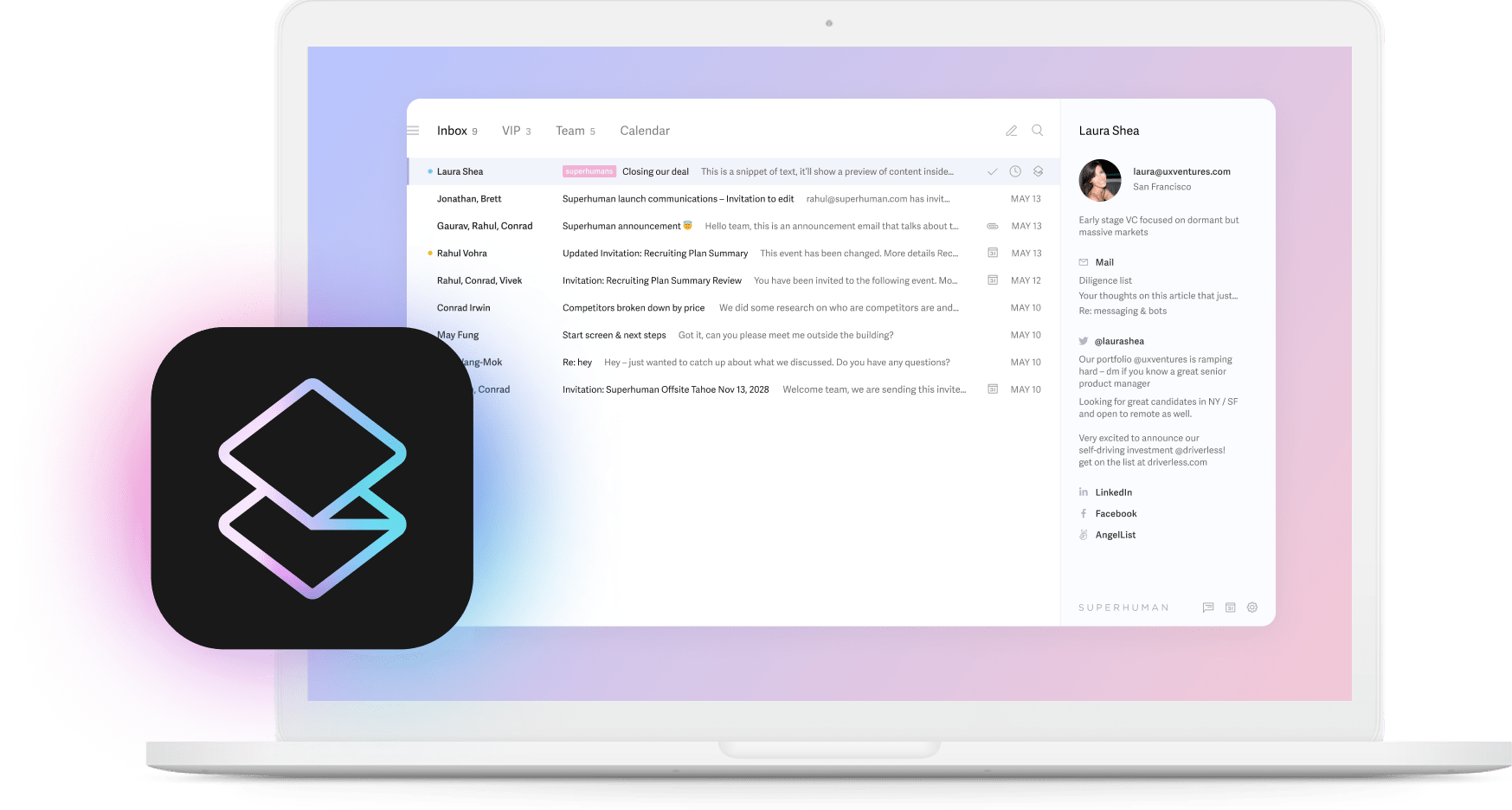
For nearly as long as humans have existed, we've been writing down information to share with one another. As early as 3200 BC, humans made the leap from counting and recording goods with clay tokens, to using pictures and symbols as part of a cuneiform script invented to convey ideas in writing. Fast forward to today, and suffice it to say, things have changed a bit.
More than 5,000 years after that first writing system emerged, electronic communication is the norm, allowing people all over the world to communicate in real-time, sharing massive amounts of data and information almost instantly via a wide variety of communication platforms. From the humble fax machine to remote Zoom meetings (and everything in between), electronic communication can take many forms — and each common form comes with its own challenges unique to today's communication landscape.
Having the right tools can make or break your success in electronic communication. If you're looking for the best tools — plus tips and tricks for getting the most out of all your electronic communication — this is the article for you. Let's dive in.
What is electronic communication?
Electronic communication consists of all the different forms of communication we can accomplish using electronic devices — everything from fax machines to telecommunications, smartphones, email, social media, and everything in between. For the purposes of this article, though, we'll focus on electronic communications systems that are widely used by modern businesses in the digital age:
- Email
- Instant messaging and live chat
- Websites, blogs, and social media
- Phones
- Video
Pros and cons of electronic communication
Electronic communication methods and devices come with both benefits and drawbacks.
Pro: Electronic communication shortens response time. Gone are the days of playing phone tag with colleagues (mostly). While some forms of electronic communication (like email) can still come with lengthier response times, technology has allowed for instantaneous delivery of messages, even across long distances. Colleagues who are located on different sides of the globe can communicate in real time via live chat, texting, or a video call.
Pro: Communication technology is evolving at a rapid rate. As distributed workforces and globalization become more of the norm, technology is rising to meet growing challenges. The drawbacks of electronic communication that currently exist (that we'll describe in a minute) are already being addressed by new technology that's making communication faster, smoother, and more frictionless for workers all over the world.
Con: Text-based communication lacks non-verbal cues. This drawback is being addressed by video conferencing technology, but as of now, the majority of business communication is still text-based, taking place over email or tools like Slack. The lack of nonverbal communication means context can be missed, messages are open to interpretation, and miscommunication is more likely than when interacting face-to-face.
Con: Technology failures can disrupt communication. Most electronic communication that's commonly used today requires a strong internet connection, as well as hardware like routers and servers. If hardware fails, or if service providers suffer outages, it can disrupt communication with huge consequences — one recent study found that IT downtime can cost companies up to $1 million an hour.
How is electronic communication different today?
Communication technology now changes incredibly rapidly — that's a hallmark of the digital age we currently live and work in. Consider this: the telegraph, the first widely-used form of electronic communication, was invented in 1843. The telephone soon followed in the late 1840s. The world wide web, which was the basis for the modern internet, didn't exist until 1991 — nearly 150 years later. It took well over a century for communication technology to evolve from its most basic early forms to something more recognizable to those of us who use it today.
But in more recent times, major technological advancements have happened much more quickly. The internet became widespread in the 1990s, but the first smartphones became available in 2002, barely a decade later. In 2007, the first iPhone was released, and now, just 15 years after that, it's hard to even imagine a world where the average person doesn't carry internet connectivity in their pocket at all times.
The amount of rapid innovation that's happened in communication technology has changed the business landscape, giving rise to greater globalization and the proliferation of remote work — something many of us couldn't have fathomed as possible as recently as a few decades ago.
6 electronic communication tools — and how to get the most out of each one
Electronic communication takes many different forms, and each of the most common communication devices and methods comes with its own challenges. These are some of the most common electronic communication tools in business, and how to use each one to maximize its benefit.
Email isn't the most efficient way to use electronic communication in business. Email messages aren't necessarily the most collaborative form of communication, and with the sheer volume of email people send and receive — nearly 300 billion per day in 2019 — it's easy for messages to get lost in the shuffle. Still, email has its place, and can be useful for:
- Sharing one-way pieces of information, like project or status updates
- Providing directions
- Sharing data and links
- Sending attachments
One of the biggest challenges facing email as a form of modern business communication is how widespread it has become. Email is a tool that virtually everyone uses, both for business and personal applications, and because of this, email clients are designed to appeal to as many people as possible. This means a lot of untapped potential for email, especially when it comes to features that could make email more useful to "power users" who spend a lot of time in their inbox.
Solution: Superhuman. It adds features like keyboard shortcuts, AI triage, reminders, automated follow ups, and scheduled sends for Gmail and Outlook users, all with a minimal and beautiful design. Superhuman saves people hours a week on email — it takes the oldest and most straightforward communication tool on this list and levels it up in every way.


Instant messaging and live chat
Instant messaging (IM) means instantly transmitting text-based messages across the internet or an internal network. IM tools were popular in the early days of the internet (remember AIM and MSN Messenger?), but today, it's more likely that you use tools like Facebook Messenger to chat with friends and family, or Slack to send messages to coworkers.
One of the biggest challenges that comes with communicating with a distributed team is response times — email can have response times up to days or even weeks. Instant messaging doesn't automatically solve that problem — it's still up to the message recipient to respond in a timely manner. But it provides a platform where quick messages can be exchanged in real-time between people who are online at the same time. A tool like Slack is best used when looking for a short answer to an easy, non-urgent question, or to chat or collaborate with colleagues in real time.
Websites, blogs, and social media
Not all electronic communication is used internally by businesses — or even meant to be. Websites, blogs, and social media play an important role in the electronic media landscape, helping disseminate information to customers and clients, or attract new ones to your business.
Websites and blogs can harness the power of search engine optimization or digital advertising to gain traffic from users who might convert to customers. Social networking sites are useful for getting information out to a wide-ranging audience or subscribers and other users. For spreading the word about promotions, events, product launches, and other important business events, websites, blogs, and social media play an important role in any business' overall electronic communication strategy.
Phones
In a time when so much business communication happens via digital platforms, it can be easy to overlook the classics, like phone calls. Even with the rise of cell phones and smartphones, there are still instances in which a voice call or voicemail is still the right communication method to use.
For example, one challenge that comes with the text-based of many digital communication platforms is that they can lack a personal touch. Picking up the phone and giving someone a call — whether it's a colleague, a customer, or a prospect — can sometimes help build connection and trust better than an email or Slack message.
Video
Video as a communication tool can take a few different forms. Informational videos can be produced for either internal use (for example, training videos), or for external communication (for example, product tutorial videos).
But since the start of the pandemic, one particular type of video communication has been on a steep rise: video conferencing. With many newly remote teams, video meetings became far more commonplace, though they've been a common tool for distributed teams since well before 2020.
Video conferencing tools solves a tricky problem that comes with a lot of electronic communication: the lack of nonverbal cues. A video chat allows all participants to see things like gestures and body language, providing important context to more nuanced discussions than those that are best had via email or chat.
Multimedia
The point of a list like this isn't to help businesses choose the best electronic communication channel, but to highlight that in the digital age, it's impossible not to take a multimedia approach to electronic communication. The challenge many businesses face is choosing which platform is right for specific types of communication. The challenges we've described throughout this list (and the communication channels that provide the solutions to each) can help.
Unlock the potential of email communication with Superhuman
While using each type of electronic communication, remember that maximizing the value of each channel requires a two-pronged approach:
- Using the right channel for the type of communication
- Using the right tools
Make your email faster and achieve more by using Superhuman. With features that give you superpowers, Superhuman provides an email experience that's designed to help you get the most out of your inbox.


